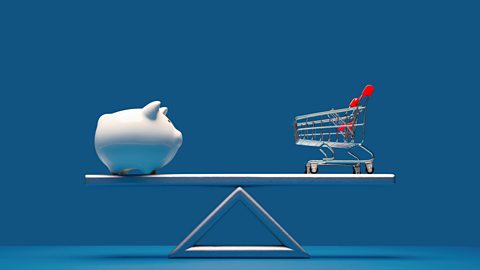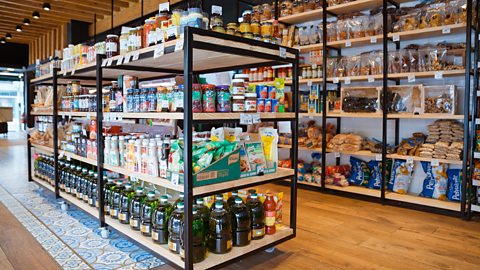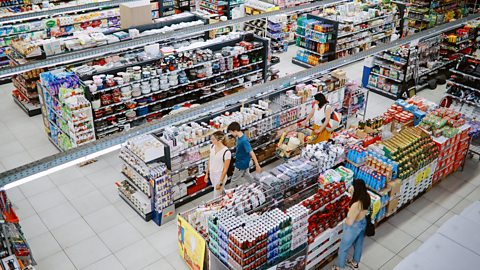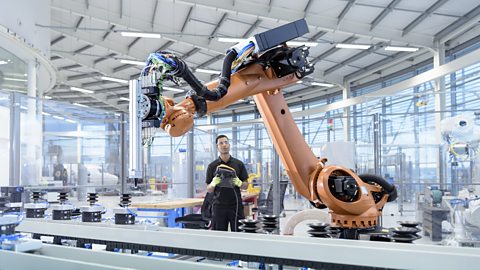Key facts about business growth
Benefits of business expansion: Increased sales and profits, better cash flow, economies of scale, increased market share, and improved corporate image
Economies of scale: Cost advantages as output increases, including marketing, technical, financial, and purchasing economies
Drawbacks of expansion: Diseconomies of scale such as poor communication, lack of motivation, and coordination difficulties
Factors limiting growth: Increased unit costs due to inefficiencies and challenges in managing larger operations
Reasons for and against business growth; and factors limiting growth
What are the benefits and drawbacks of expanding a business?
Lu Li talks about the importance of internal growth for a business
Hi, my name is Lu and I'm the founder of Blooming Founders.
So, in the simplest terms, business growth means when a business is growing and typically it means that it turns over more revenue.
Business growth is important because that means typically more jobs can be created, the business can expand and serve more customers across the country or even internationally.
A business plan is a document that helps the founder understand what he or she is actually doing and it's a document that shows what the business is about and what they are planning to do in the next couple of years or so.
Data is really important for decision making because data doesn't lie, so it's a really clear indicator whether your strategy is planning out, whether things are going in the right direction and whether you can afford the things that you want to do for your business, whether you are turning a profit or not.
Whether you can hire someone to help you with the business or not.
There are different sources of finance for a new business. It can come from the savings of a founder, it can also come from a bank, it can come from friends and family, or it can come from outside investors. So, these are other people who would give you money to start up your own business but then they would demand a share of your business in return and they would hope that you would grow the business, so their share would get more valuable over time.
Positive cash flow is when there is more money coming in than money going out, which is a very good thing. Having positive cash flow is super important for business growth because it's a strong indicator that you can actually afford to grow.
One of the mistakes that a lot of business owners do is that they try to grow too quickly and too fast, which means that they commit to costs and liabilities without having the cash flow to back it up.
When you know the economy hits a recession then everything looks a bit more gloomy and it's a bit more difficult when it comes to business growth because the normal consumers think, "I'll just hold on to my own money," which means they are not giving it to you, as the business owner.
When there is an economic boom that tends to be good news, consumers are spending more, you are more likely to sell your products and services. You can hire more people to expand. You can maybe think about exporting or going to other countries.
Things to be wary of: not to get too euphoric about the boom and commit to too many investments because you don't know how long the boom is going to last. It's just kind of like keeping a balance between how fast you want to grow the business and how you think the economy will actually help you to do that or not.
Alright guys, I hope that was helpful and you have learned a lot more about business growth and I'll see you later.
The size of a business can be measured in terms of its sales, its value, or the number of employees it has. In order to expand, the business needs to increase one or more of these elements.
Benefits of expansion include:
increased sales & profits
better cash flow (meaning less chance of failure)
economies of scaleWhere the average costs (of production, distribution and sales) fall as the business increases the amount of product that it produces, distributes and sells.
increased market share/greater market influence (less competition), so more power in the market
increased publicity/better corporate image: increased status and reputation will make it easy to launch new products
What are economies of scale?

Economies of scale are any factors which causes unit costs to fall as output rises.
In other words, as the business grows their total costs will rise but their cost of producing each unit will fall, giving them a greater profit margin.
There are four types of economies of scale:
marketing economies
technical economies
financial economies
purchasing economies
Marketing economies?
If a small business which sells printed business cards decides to run a national advertising campaign to help increase sales, they may find that the lump sum cost (say, £50,000) is too high because they only sell a few thousand business cards each year.
Whereas a larger business may be selling hundreds of thousands of cards per year so can spread the advertising cost over more units sold.
Try this marketing economies question

Big Supermarket plc and Groceries R Us (a small grocery retailer), both embark on expensive advertising campaigns to try to boost market share.
The cost of each company’s campaign is £1,000,000 (one million).
What is the cost per unit to the respective companies if the output levels are as follows:
Groceries-R-Us: 900,000 items sold per year
Big Supermarket plc: 100,000,000 items sold per year (one hundred million)

Big Supermarket PLC
Cost of advertising campaign:
£1,000,000 / 100,000,000 units
= Extra Marketing cost per unit sold of
£0.01
So either they have to pass on the small extra costs to the customer (by raising average selling prices by a tiny 1p), or they can accept 1p less profit margin per unit.
Not exactly a tough choice!

What is the cost of the advertising campaign for Groceries-R-Us?
Cost of advertising campaign:
£1,000,000 / 900,000 units
= Extra Marketing cost per unit sold of
£1.11
So either they have to pass on the extra costs generated by the advertising campaign to the customer (by raising average selling prices by £1.11), or they can accept a lower profit margin per unit.
Technical economies

Industrial Machinery Limited want to invest in eight new machines costing a total of £174,450.
What is the cost per unit of the new machines if annual output is:
(a) 70,000 units?
(b) 950,000 units?

Cost per unit of the new machines if annual output is:
(a) 70,000 units?
£174,450 / 70,000 units = Extra cost = £2.49 per unit
Cost per unit of the new machines if annual output is
(b) 950,000 units?
(b) £174,450 / 950,000 units = Extra cost = £0.18 per unit
So, clearly a firm which operates at a larger scale can better absorb the extra costs of upgrading their production facilities.
In this example, when operating at a small scale, the extra cost per unit produced was £2.49.
But at the higher output level, the extra unit cost almost vanished! It dropped to just an extra 18p per item produced, which makes the decision to invest a much easier one to make.
Financial economies
This is the ability of larger businesses to borrow money more cheaply than smaller firms.
Interest is the money charged by banks to people who borrow from them (eg take out a loan).
A larger business is seen as a lower risk than a small firm (possibly as it may have been in business for longer, have more specialised staff or own more assets which could be sold to pay back the loan in an emergency) so the bank will tend to charge a lower rate of interest to the large firm.
This reduces the unit cost of production for the larger firm.
Financial economies question:
Jack’s Pies is a local pie emporium, run as a sole trader. Jack needs new ovens, which are going to cost £10,000. He needs to borrow the money from the bank. Unfortunately, the bank sees Jack as a high risk: he has only been in business for 2 years, he has few assets of significant value and the market in which his company operates is fiercely competitive.
The bank agrees to lend Jack the money, but at a rate of interest of 14% p.a.
Nice Pies plc is a large company which has been involved in the production and distribution of quality pies for 30 years.
Nice Pies would like to borrow £10,000 for minor upgrades to its production facilities. The management of Nice Pies are willing to borrow the money from the bank as long as the rate of interest is below 8% p.a. If the interest charge is higher than this, they will fund the upgrade out of working capital or issue extra shares.
Assume that:
Jack's Pies borrows £10,000 at 14% pa
Nice Pies plc borrow £10,000 at 7% pa
loans are to be repaid within 12 months (1 year)
If the loans are repaid within 1 year, how much interest does each company pay?
Jack's Pies
£10,000 at 14% pa
(£10,000/100) x 14 = £1,400
interest = £1,400
Nice Pies plc
£10,000 @ 7% pa
(£10,000/100) x 7 = £700
interest = £700
So, the larger business is seen as a lower risk by the bank, who then charge less interest on the borrowed funds.
Why is Nice Pies plc seen as a lower risk?
Nice Pies is a public limited company or plc which means they are a much bigger company (if they are a plc they are unlikely to be worth any less than £20 million).
They own more assets (buildings, factories, machinery, office furniture, vehicles) so if they cannot pay the loan repayments they could sell assets to help cover it.
They have also been in business for a longer time, so have more management experience, and are therefore less likely to make major errors or make the business fail.
Purchasing economies
Purchasing economies of scale simply means “bulk buying”. This means that the cost of stock or components per unit falls as the size of the order increases.
Dan The Gamer Smyth has built an online business selling his own design of games controllers used by pro gamers. He started off making these in his garage, modifying existing gaming controllers and soldering circuit boards himself. As demand for the products has grown, he has had to contact a local manufacturer, Denroy Plastics Ltd, to make the controllers for him.
Eugene the sales manager has quoted him for different quantities of the product, in the table below:
| Item | EXAMPLE: Unit costs at 100 units | Unit costs at 1,000 units | Unit costs at 10,000 units + |
|---|---|---|---|
| £ | £ | £ | |
| Plastic body | 1.50 | 1.20 | 0.90 |
| Circuit board | 2.50 | 2.00 | 1.50 |
| Buttons and lights | 0.75 | 0.65 | 0.45 |
| Cables / wiring / fittings | 1.80 | 1.40 | 0.95 |
| TOTAL COST per unit | 6.55 | ? | ? |
| Item | EXAMPLE: Unit costs at 100 units | Unit costs at 1,000 units | Unit costs at 10,000 units + |
|---|---|---|---|
| £ | £ | £ | |
| Plastic body | 1.50 | 1.20 | 0.90 |
| Circuit board | 2.50 | 2.00 | 1.50 |
| Buttons and lights | 0.75 | 0.65 | 0.45 |
| Cables / wiring / fittings | 1.80 | 1.40 | 0.95 |
| TOTAL COST per unit | 6.55 | 5.25 | 3.80 |
Factors which may limit the growth of firms
Drawbacks of expansion: diseconomies of scale
Diseconomies of scale occur when average unit costs begin to increase, often as a result of business growth. This is one of the main risks that an expanding business may face.
Poor communication
As the business grows, it may employ many more employees, making it more complicated to communicate with all staff.
For example, when Coca-Cola acquired a majority stake in Innocent Drinks in 2013, Innocent had around 250 employees. At the same time, Coca-Cola employed approximately 130,000 people worldwide.

Lack of motivation

Staff in small businesses tend to have a more obvious sense of a common purpose; the idea that “we are all in this together”. Most employees know each other by name and relationships at work tend to be quite friendly and informal.
As the business grows, it may employ many more employees, making it more likely that new staff feel like just another worker and may not understand what the company is trying to achieve. That sense of alienation is likely to lead to less output per worker.

Innocent Drinks: 250 employees
Coca-Cola: 130,000 employees
It is very difficult to build a sense of teamwork when your team is over 100,000 people!
Difficulties of coordination
As the business grows, it may operate in multiple countries with different time zones, languages, legal frameworks and cultures. This makes it difficult to coordinate all the different business functions (marketing, operations, finance, managing people) on a daily basis, so that efficiency is reduced and unit costs tend to rise.
For example, when Coca-Cola acquired a majority stake in Innocent Drinks in 2013, Innocent operated out of three main sites: its headquarters in London, a production facility, and a smaller office in another European location.
In contrast, Coca-Cola had a significantly larger global footprint. By 2013, Coca-Cola operated in more than 200 countries with around 900 bottling plants and production facilities worldwide, along with numerous regional offices and distribution centres.
Calculating average unit costs

The formula for calculating unit costs is:
Unit costs = total costs ÷ output
If a business has total costs of £200,000 and produces 100,000 units, the unit cost is:
£200,000 ÷ 100,000 = £2
If the business increases production to 200,000 units and total costs increase to £250,000, the unit cost is:
£250,000 ÷ 200,000 = £1.25

Unit costs have decreased. This shows that the business is experiencing economies of scale.
The business then increases production to 300,000 units and total costs increase to £400,000, therefore the unit cost is:
£450,000 ÷ 300,000 = £1.50
Unit costs have increased. This shows the business is experiencing diseconomies of scale.
Try the business growth quiz
Final check
What are diseconomies of scale, and what are three main causes that lead to them?
Diseconomies of scale occur when average unit costs begin to increase as a business grows. Three main causes are:
poor communication
lack of motivation among employees
difficulties of coordination across large operations